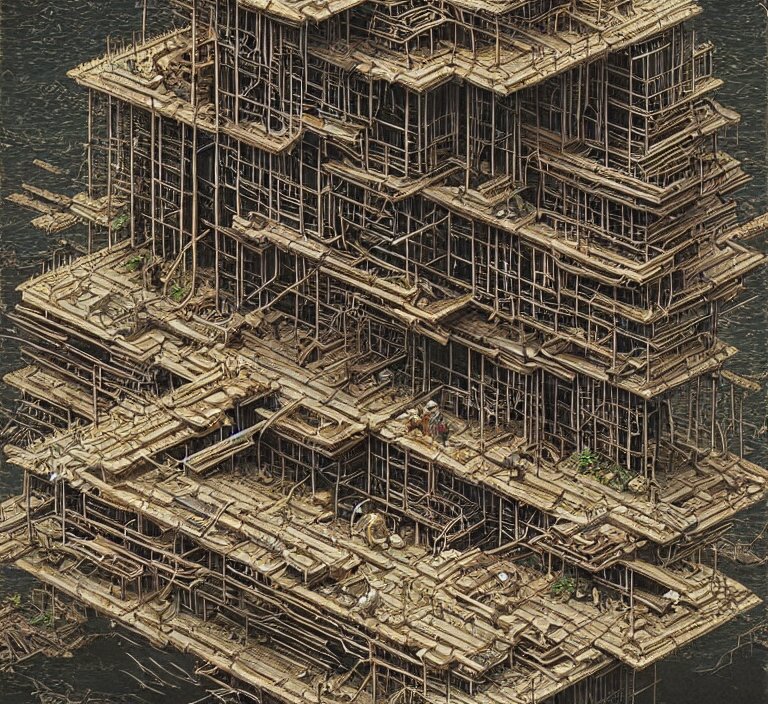B.Sc in Civil Engineering
Five for regular and six for extension
Upon admission to the universities/Institutes of Technologies, students will join the School of Electrical and Computer Engineering based on the placement by the universities/Institutes of Technologies and the students’ interest for the discipline after completing the freshman semester.
Students must take and pass all the required modules to satisfy the requirements for graduation. CGPA and MGPA at least 2.00 No “F”, “D” grades Other requirements might be set by specific University graduation requirements.
Program Details
Civil Engineering is one of the broadest and oldest of engineering disciplines, extending across many technical specialties. Civil Engineers plan, design, and supervise the construction of facilities essential to modern life like space satellites and launching facilities, offshore structures, bridges, buildings, tunnels, highways, transit systems, dams, airports, harbors, water supply system and wastewater treatment plants. A civil engineer is responsible for planning and designing a project, constructing the project to the required scale, and maintenance of the project. A civil engineer requires not only a high standard of engineering knowledge but also supervisory and administrative skills.

Carrier Direction
Civil engineers are involved in the design and building of highways, bridges and tunnels, schools, hospitals, airports and other buildings, sewage systems and water treatment facilities. Most structures, large and small, require the help of a civil engineer whether in the designing, planning or managing of the project.
Civil engineers also help to preserve our environment by assisting in the cleaning up of existing pollution and planning ways to reduce future pollution of our air, land and water.
Jobs where your degree would be useful include
- Building control surveyor
- Building control surveyor
- Building services engineer
- Engineering geologist
- Quantity surveyor
- Site engineer
- Structural engineer
- Water engineer
Courses
| Courses | Course ECTS | Cr/Hr. |
|---|---|---|
| Communicative English Skill | 5 | 3 |
| Basic Writing Skills | 5 | 3 |
| Civics and Ethics | 5 | 3 |
| Introduction to Logic | 5 | 3 |
| Applied Mathematics I | 7 | 4 |
| Applied Mathematics II | 7 | 4 |
| Engineering Mechanics I-Statics | 6 | 3 |
| Engineering Mechanics II-Dynamics | 6 | 3 |
| Introduction to Engineering Profession | 2 | 1 |
| Engineering Drawing | 6 | 3 |
| Introduction to Economics | 5 | 3 |
| Introduction to Computing | 5 | 3 |
| Engineering Thermodynamics | 4 | 2 |
| Applied Modern Physics | 5 | 3 |
| Electromagnetic Fields | 5 | 3 |
| Electrical Materials and Technology | 5 | 3 |
| Applied Engineering Mathematics III | 7 | 4 |
| Computational Methods | 6 | 3 |
| Probability and Random Process | 5 | 3 |
| Fundamental of Electrical Engineering (Circuit) | 6 | 3 |
| Electrical Engineering Lab I | 3 | 1 |
| Electrical Workshop Practice I | 3 | 1 |
| Applied Electronics I | 5 | 3 |
| Electrical Engineering Lab II | 3 | 1 |
| Applied Electronics II | 5 | 3 |
| Electrical Engineering Lab III | 3 | 1 |
| Signals and Systems Analysis | 6 | 4 |
| Network Analysis and Synthesis | 6 | 4 |
| Introduction to Electrical Machines | 6 | 3 |
| Machine Lab | 3 | 1 |
| Electrical Workshop Practice II | 4 | 2 |
| Digital Logic Design | 6 | 4 |
| Object Oriented Programming | 5 | 3 |
| Computer Architectures and Organization | 5 | 3 |
| Digital Signal Processing | 5 | 3 |
| Electrical Engineering Lab V | 4 | 3 |
| Introduction to Instrumentation | 5 | 3 |
| Introduction to Communication Systems | 5 | 3 |
| Introduction to Control Engineering | 5 | 3 |
| Introduction to Power systems | 5 | 3 |
| Microcomputer and Interfacing | 6 | 3 |
| Database Systems | 5 | 3 |
| Data Structures | 5 | 3 |
| Algorithm Analysis and Design | 4 | 3 |
| Software Engineering | 5 | 3 |
| Operating systems | 5 | 3 |
| Introduction to Compilers | 5 | 3 |
| Data Communication and Computer Networks | 5 | 3 |
| Computer and Network Security | 5 | 3 |
| VLSI Design | 5 | 3 |
| Embedded Systems | 6 | 3 |
| Introduction to Robotics | 5 | 3 |
| Modern Control Systems | 5 | 3 |
| Electrical Machines | 5 | 3 |
| Power Electronics | 5 | 3 |
| Electric Drives | 5 | 3 |
| Power Systems | 5 | 3 |
| Power System Protection and Control | 5 | 3 |
| Electrical Installation | 5 | 3 |
| Energy Conversion and Rural Electrification | 5 | 3 |
| Hydropower Engineering | 5 | 3 |
| Power System Planning and Operation | 5 | 3 |
| Computer Application in Power Systems | 3 | 2 |
| Microelectronic Devices and Circuits | 5 | 3 |
| Communication System | 5 | 3 |
| Data Communication and Computer Networks | 5 | 3 |
| Telecommunication Networks | 5 | 3 |
| Wireless and Mobile Networks | 5 | 3 |
| Switching and Intelligent Networks | 5 | 3 |
| EM Waves and Guide Structures | 5 | 3 |
| Antennas and Radio Wave Propagation | 5 | 3 |
| Microwave Devices and Systems | 5 | 3 |
| Optics and Optical Communication | 5 | 3 |
| Electrical Installation | 5 | 3 |
| Electrical Machines | 5 | 3 |
| Power Electronics | 5 | 3 |
| Electric Drives | 5 | 3 |
| Modern Control systems | 5 | 3 |
| Digital Control Systems | 5 | 3 |
| Instrumentation Engineering | 5 | 3 |
| Embedded Systems | 5 | 3 |
| Introduction to Robotics | 6 | 3 |
| Industrial Process Control and Automation | 5 | 3 |
| Principles of Electronics Design | 5 | 3 |
| Analog System Design | 5 | 3 |
| Digital System Design | 5 | 3 |
| VLSI Design | 5 | 3 |
| Microelectronic Devices and Circuits | 5 | 3 |
| High Frequency Electronic Devices and Systems | 5 | 3 |
| Power Electronics Technology andApplications | 5 | 3 |
| Optoelectronics | 5 | 3 |
| Modern Trends in Electronics Engineering | 5 | 3 |
| Research Methods and Presentation | 3 | 1 |
| Semester Project | 4 | 2 |
| Industry Internship | 30 | 15 |
| Entrepreneurship | 4 | 2 |
| Industrial Management and Engineering Economy | 5 | 3 |
| B.Sc. Thesis | 12 | 6 |

